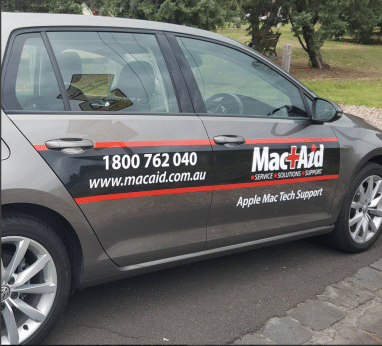Microsoft Office now comes in a few different flavours. For clients who aren’t in the know, Office is available for Mac as Office 2016, and Office 365.
Microsoft Office now comes in a few different flavours. For clients who aren’t in the know, Office is available for Mac as Office 2016, and Office 365.
The main point of difference is that Office 365 is a cloud-based subscription service, requiring monthly or yearly payments. With Microsoft Office 2016, it is simply a one-off fee for a perpetual licence.
Given that Office 365 is a cloud-based service, it will also provide you with regular feature updates for all the Microsoft applications, which is not available in Office 2016. The good news is that the security updates will be maintained in Office 365 as well as Office 2016.
In terms of online storage, this is only provided for in Office 365, through OneDrive.
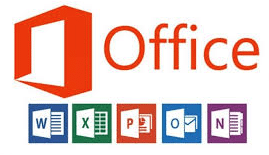
Microsoft 2016 (Home and Student) costs approx. $199 (AUD) for the outright license, and is a one-time purchase.
Microsoft 365 is a subscription-based fee, which you can choose to be billed annually or monthly. Depending on what you choose, they vary between $10 and $129 (per user).
If you are using Office 365 for Business purposes, you will need to get the Business subscription which has a slightly different structure.
Articles by Microsoft have hinted at a release for the second half of 2018. Office 2019 will include Word, Excel, PowerPoint, Outlook and (in the business version), Skype. Previews of the new version will start shipping mid this year.
You can still continue to use these versions or opt to upgrade. It is worth noting that as the versions get older, you may begin to experience a slowing down of the applications when in use.
This can include taking longer to open and save documents.
In terms of support for previous versions, here is a quick breakdown of a few.
All versions of Microsoft 2011: Service Pack Support End date was 10/01/2012
Most versions of Microsoft 2013: Service Pack Support End date was 14/04/2015
Most versions of Microsoft 2016: Mainstream Support End date is 13/10/2020, with the Extended Pack Support End date being 14/10/2025.
To find out more about Microsoft Office lifecycles, click here.
Buy a Mac that has everything that you will need for your tasks.
This means having not only enough space for your current data, but ensuring that there is plenty of space left for files, folders and apps in the future. Ask yourself these questions… What type of files do you have? What applications do you wish to use? Do you want to use Windows as well as macOS?
These factors can determine how long you can keep your Mac as it is or whether you will need to upgrade the storage or RAM.
Keep your cables (and adapters) intact and lasting longer by looking after them in the following ways: Don’t fold/bend the cable at either end of the connection points. This is how the plastic begins to fray and will expose the wire. If it is just starting to fray, then look at wrapping sticky tape to these areas or wrap spring coils (found in many pens) around them to avoid any further damage. If your MagSafe charger comes with the plastic hooks, don’t wrap the cables around tightly around the connector ends. This can loosen the cable and make the plastic fray at the charger end.
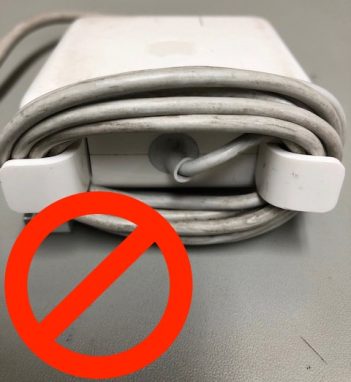
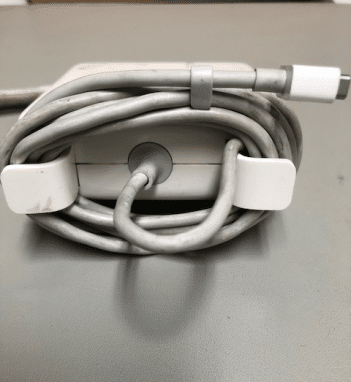
Care must always be taken when carrying your MacBook around. If you don’t it can lead to damaging the hinge or the screen of your beloved machine, or risk forking out extra cash to fix it later on. This means picking up your machine by the body, and not holding the machine by the trackpad or screen itself.
Dogs and cats are great companions for us, whether it is keeping us company at home or at work. But once you begin working on your MacBook, you may want to keep a closer eye on them, because their soft fur can cause your Mac to overheat. Plus, it means that there is a higher chance that all that loose fluff could land inside the machine vents, causing the fans to work overtime.

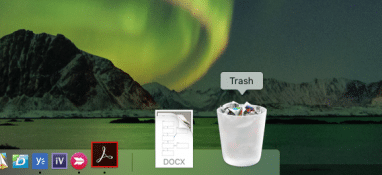
Deleting items from your MacBook doesn’t mean that it will be completely removed from your drive. The Trash bin still holds the file and gives you the chance to easily restore it if you made an error. Once you know you will definitely not be needing those items, make it a habit to then empty it on a regular basis.
Don’t work on your MacBook on pillows or any other soft material that can trap the circulation of air. This can lead to overheating and shorten the life of your battery. Overheating MacBooks can result in slower processing times, unexpected shutdowns and noisier fans. We found a solution with this neat find on Amazon for $39.99.
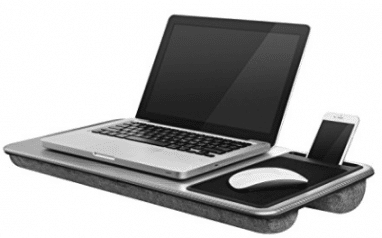
Dust can accumulate in between the keys and around the screen. So depending what model your mac is, you may be able to use a small and soft brush to dust in between the keys, corners of your screen and vents to prevent your machine from overheating.
Some updates are features based and others are to improve the security. Either way, try and stay on top of these. Use it as an excuse to stretch your legs, go on your lunch break or do anything else that can get you away from your desk for that time. But if you do happen to forget, why not try setting this to go off at the end of the day?
Your most valuable asset is the data that is stored on the Mac, not necessarily the Mac itself. Backing up your data is something that you will hear a lot of from our techs when we set you up with a new Mac or provide you with support. It is important because no matter how well you look after your Mac, it can unexpectedly die or become unusable through no fault of your own. At least you will still be able to work on your files from your backup drive.
We are now back to a full team!
Our latest recruit is Steve Abrahall, who joined Mac Aid at the beginning of March. Since starting, he has joined up with several of our technicians at many of our clients’ locations to say hi and get to know how we work.
So, who is Steve? Steve has been in the tech world for a number of decades, who quietly enjoys learning about new machines and will happily soak up a manual or two. He also likes to take the time to tinker away on a machine or three, depending on the day.
Originally hailing from New Zealand, his first Australian move landed him in Sydney and since then, he has carried dual citizenship. For the past ten years, Steve now calls Melbourne home. Steve definitely prefers the lifestyle of Melbourne in comparison to Sydney. In Steve’s own words, ‘Melbourne looks nicer’.
Steve has a couple of tips that he would like to share with our clients:
His first is backup, backup and backup again.
He thinks of backups as being similar to having insurance on your home or car and using it when something goes wrong. It is the same with backups, it provides you with a safety net for when something goes wrong. Think about having an offsite backup as well as incremental and the occasional snapshot backups too.
His second most repeated tip is to use long passphrases to protect the really important logins.
This includes your banking, email and anything else that stores sensitive information. By passphrases, he means something that is long and has digits and characters (and that you can remember), for example, I-love-my-cat-he-is-fluffy-2018.
Outside of work, Steve likes to tinker with Raspberry Pi and Arduino electronic devices and open source software. Aside from all the techie stuff, Steve also likes to cook an awesome dish or two. His current favourite is making Jar Salads, but he loves to do a BBQ, and is also working on his pavlova skills.
If you are needing to run Windows on your Mac, there are a few options that can facilitate this.
But why run Windows on a Mac anyway? For those who need it, it may be because that particular app can only be found on Windows or the app may have enhanced features or better performance on the Windows version.
Before you can get started, you need to ensure that you have a valid Windows licence.
Here are some pointers about choosing the right one for you. Remember, if you are not sure what you are doing, the best advice is to book your machine into our workshop. We can do this for you and install exactly what you need, saving you from any unwanted stress.
Apple’s Boot Camp allows you to install Windows onto your mac.
To access the Windows platform, you will need to reboot your Mac. You need to do this every time you wish to switch between macOS and Windows. Essentially, you can’t run both Windows and macOS side by side on the same screen.
Boot Camp is an app that is immediately available to access on your Mac. To get started simply go to Applications > Utilities > Boot Camp Assistant. Then simply follow the prompts.
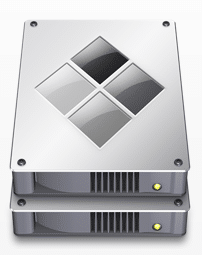
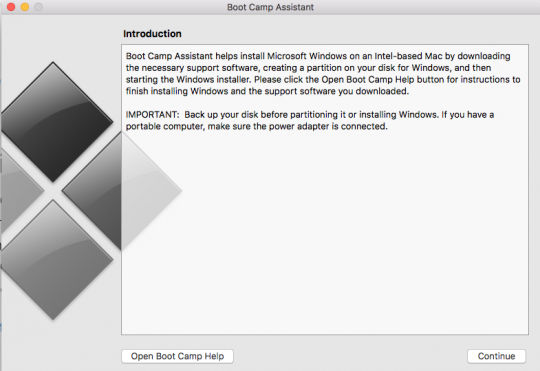
Using this option will allow the Windows apps to work alongside macOS apps without needing to reboot or use a different screen.
There are a number of programs available in the marketplace that you can choose from. The most common programs include Parallels VM and VMWare.
Installing one of these programs will create a ‘virtual machine’ (VM) on your Mac. It then duplicates the workings of a Windows platform. To use the Windows apps is easy. It is simply a few clicks away, as they behave just like any other macOS app. This means no rebooting needed to access any of the Windows apps. Simply interact with them just as you would when accessing any macOS apps.
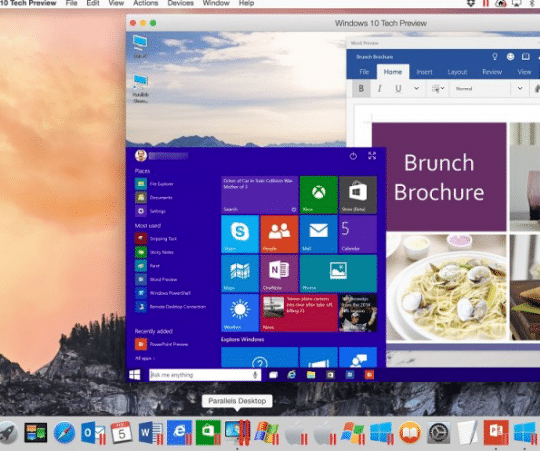
Regardless of which way you go, you will need to ensure that your Mac has sufficient amount of storage space to service the partitions for both macOS and Windows.
It is also very important that you install Windows with a valid licence. Not sure where you can get this? Contact us and we can sort you out with the right one.
You will now find it easier to spot Nathan out on the road!
His VW Golf has been given the Mac Aid makeover. The shiny new signage on the sides and back doors has just been completed in mid-February.
We are intending to expand this shortly by adding another three cars to the mix. So watch this space for further updates on what cars they are going to be.
